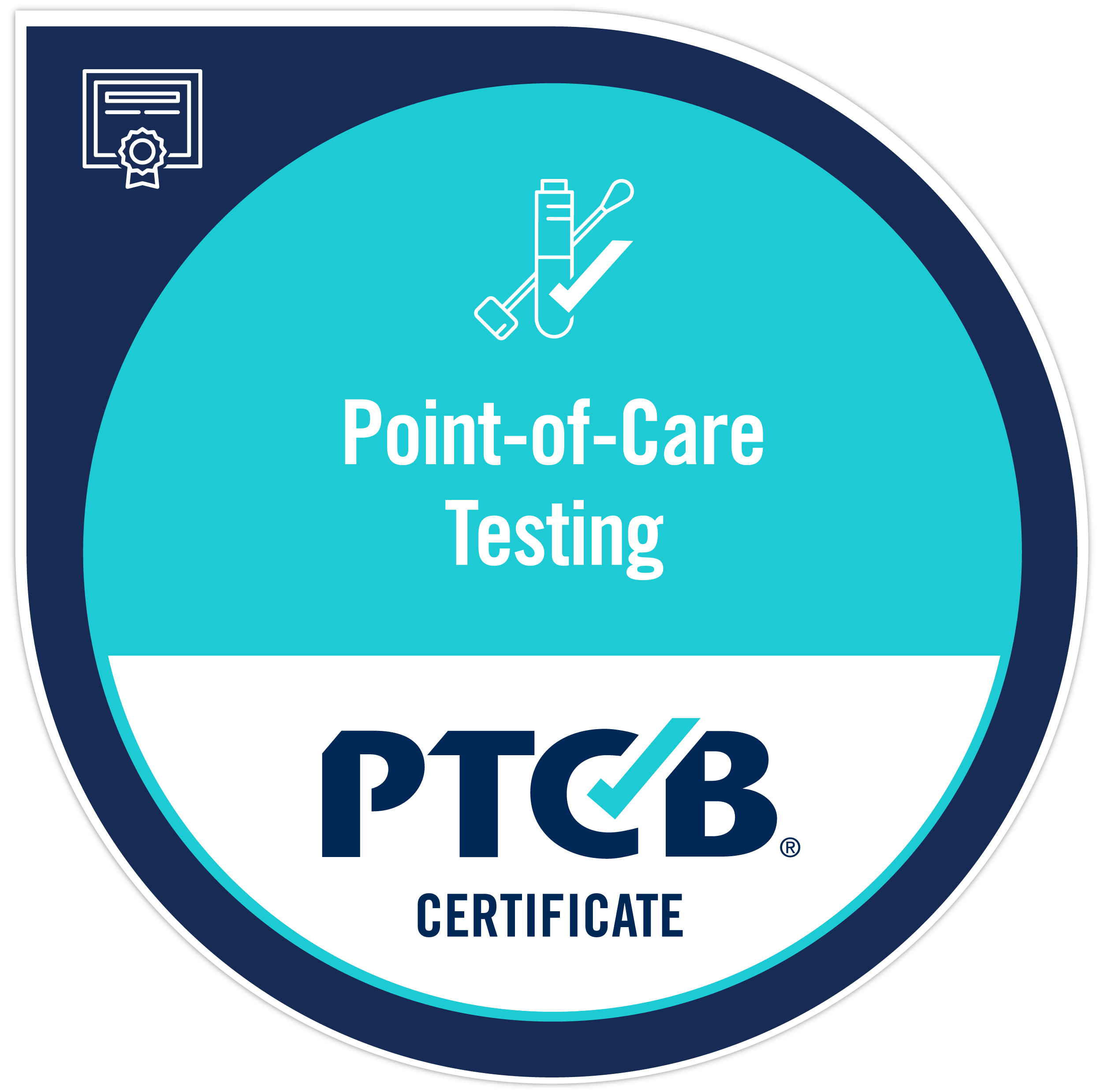| Safety and Precautions (16%) |
| Roles of pharmacists and pharmacy technicians in POC testing |
| OSHA Bloodborne Pathogen Standard and related safety considerations |
| Biohazard waste handling and disposal |
| Personal protective equipment (PPE) necessary to protect patients and those administering tests |
| Need for and methods to confirm patient identity |
| Diseases and Specimens (34%) |
| Basic anatomical and physiological terms related to tests |
| Common specimen types (e.g., whole blood, saliva) and their location on/in the body |
| Signs, symptoms, and characteristics of common chronic disease states (e.g., hypertension, diabetes, hypercholesterolemia) where POCT may be relevant |
| Signs, symptoms, and characteristics of common acute infections where POCT may be relevant |
| Collecting a focused health history (e.g., acute symptoms [e.g., CENTOR score], medication allergies, signs of disease [e.g., swelling, bruising]) |
| CLIA-waived Tests (30%) |
| Clinical Laboratory Improvement Amendments (CLIA) of 1988 as it pertains to POC tests |
| CLIA waiver process, CLIA Certificate of Compliance, and CLIA Certificate of Accreditation |
| Devices and technology used in common POC tests |
| Conditions and uses for common tests (e.g., Prothrombin time [PT], Influenza, Streptococcus, A1C, HIV, Hepatitis C, COVID-19, glucose, cholesterol) |
| Understanding and following manufacturer instructions for tests |
| Test Results, QC, and Recording (20%) |
| Qualitative and quantitative test results and their characteristics and related concepts (e.g., time since exposure, terms “false positive” and “false negative”) |
| Requirements and best practices in recording results |
| Identifying invalid or anomalous results |
| Labeling and documentation requirements for patient samples |
| QC testing methods (i.e., external, internal) and when they should be used |
